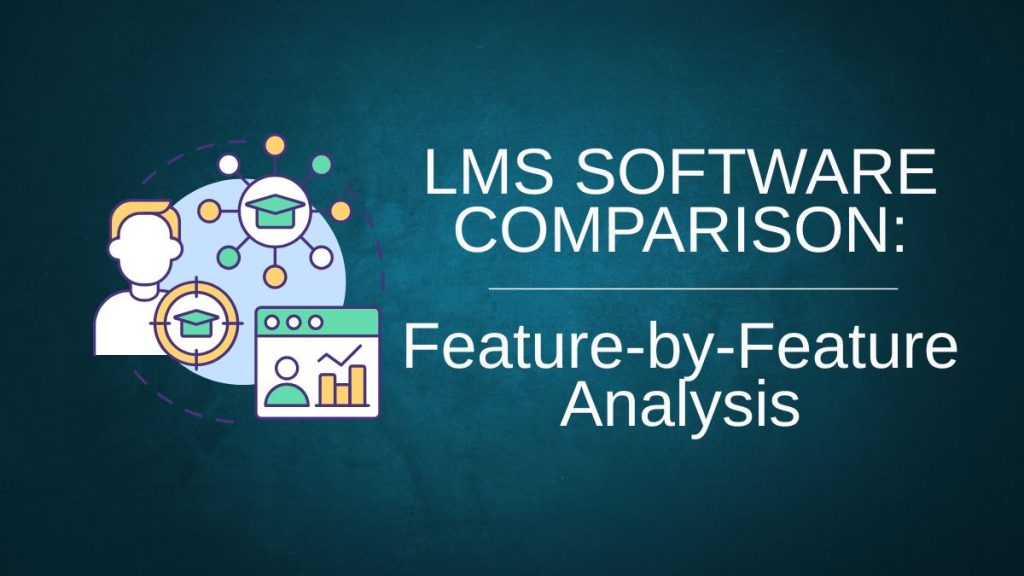
Selecting a suitable Learning Management System (LMS) is critical for educators and learners in the modern educational world. A Learning Management System (LMS) is an online platform that makes it easier to deliver educational content, track progress, and manage communication. There are a lot of solutions out there, but understanding market nuances and key aspects that separate these systems is vital. This guide serves as a feature-by-feature analysis to aid you in making the right choice.
Any LMS must have an easy-to-use interface; a user-friendly design allows users to navigate or find any tools they want easily. Some also provide customizable dashboards that you can tailor to meet specific needs. Having a clean layout with all the features pays off because users are less likely to be confused, can enjoy the experience, and can focus on learning efficiently.
One of the key functions of learning management systems software is content management, which also means the ability to upload other files (documents, video, presentation, etc.). More sophisticated systems enable continuous streaming from links to content providers, thus giving access to additional resources. The content tagging and categorization aspects also help the seamless organization and retrieval of the materials.
All good education has a communication factor. The LMS needs to provide a range of channels you can interact with, such as forums, chat, and email. They promote collaborative and participatory learning and socialize with other students and instructors. Additional functionality in some systems includes video conferencing for real-time discussions and virtual classrooms.
Tracking progress and performance is important and is an essential assessment feature. Your LMS must provide many tools to create quizzes, assignments, and exams. Options for automated grading are a time saver and guarantee consistency in evaluating responses. Lastly, feedback mechanisms like comments and annotations allow students to understand how they are doing better.
With the world living on their smartphones, it is crucial to have a mobile-friendly LMS. You shouldn’t sacrifice anything regarding access to content and tools; users should be able to access everything from smartphones and tablets. Responsive designs facilitate on-the-go learning, which makes it more flexible and convenient.
LMSs use any third-party software to enhance their functionality. This aspect means building integrations with tools such as calendar applications, email services, and analytics platforms. A seamless integration makes the process smoother and allows users to manage their academic work.
Any LMS must ensure that the user data remains protected, so the platform needs robust security measures like encryption and secure authentication systems. Users should be able to set up the privacy settings according to how their information will be visible. Regulation compliance related to data protection is another essential part that builds trust and confidence among users.
Customization is essential because not all organizations have the exact requirements. Compared to other generic LMSs, a customizable LMS can be tailored to suit specific needs, branding, and a personal touch. Customizable templates and themes allow organizations to establish a consistent look and feel.
As organizations expand, the requirements for an LMS will also shift. The system can handle and serve more users and courses without a performance hit. Such adaptability guarantees the system will keep its functionality and efficiency due to changing demands.
Reliable support, documentation, and training resources are essential for new and experienced users. An LMS must provide extensive documentation, tutorials, and prompt customer service. These resources help troubleshoot and optimize the system’s capabilities, which empowers users to utilize the system’s features.
One major factor in choosing an LMS is budget constraints. Make sure you balance cost with what features and capabilities you want and need. Specific systems also have tiered pricing options, thus enabling organizations to self-select an appropriate plan based on their needs and budget. This way, you can compare each option’s value and make a more favorable choice regarding cost.
You must base your selection of the LMS on multiple factors that intertwine according to the educational requirements. Organizations will choose a system according to their needs through the user interface layout, content management, communication tools, etc. Such an approach permits you to pick which core features are more essential so that you may select the LMS that will shine and enhance the learning experience.









